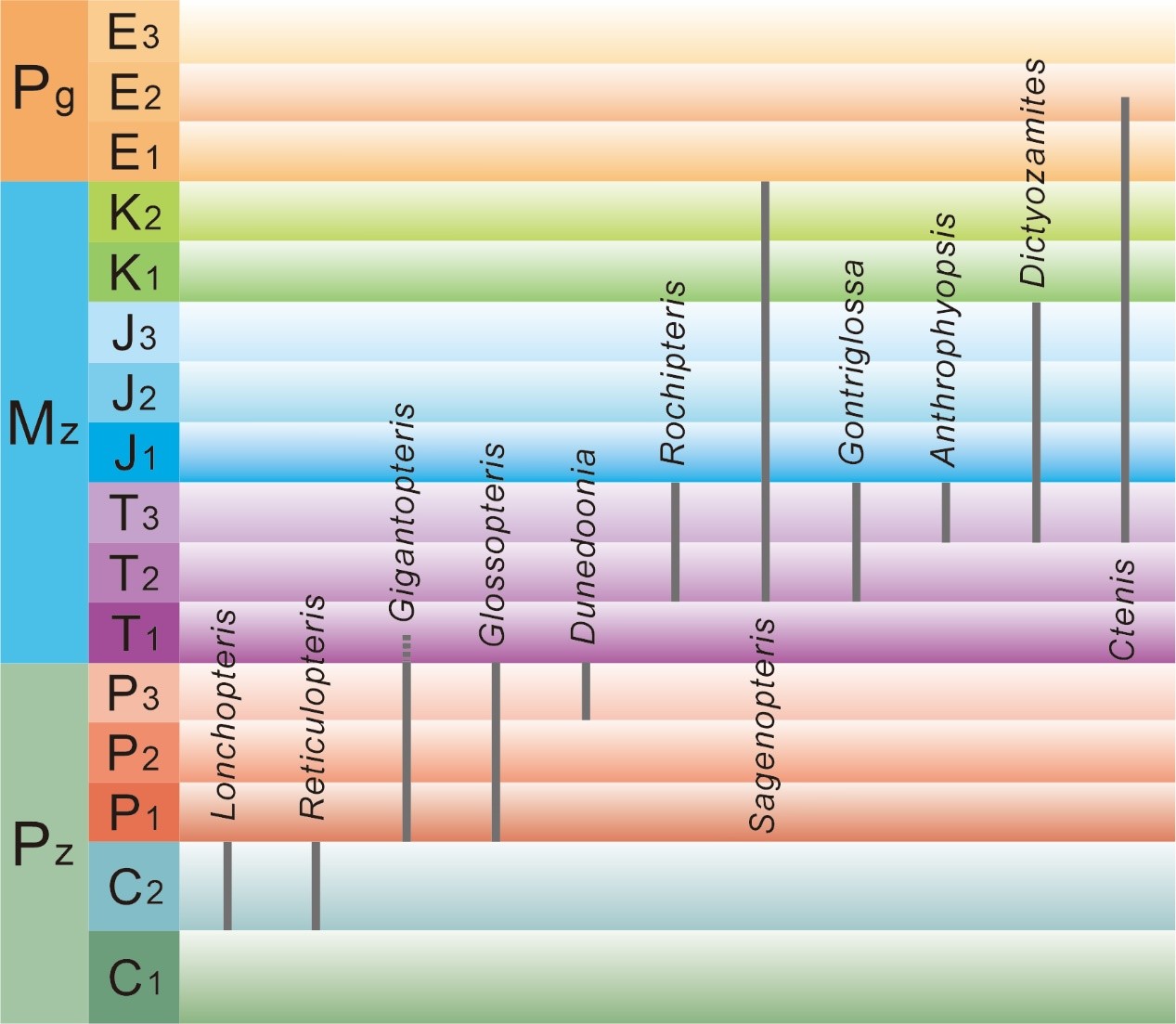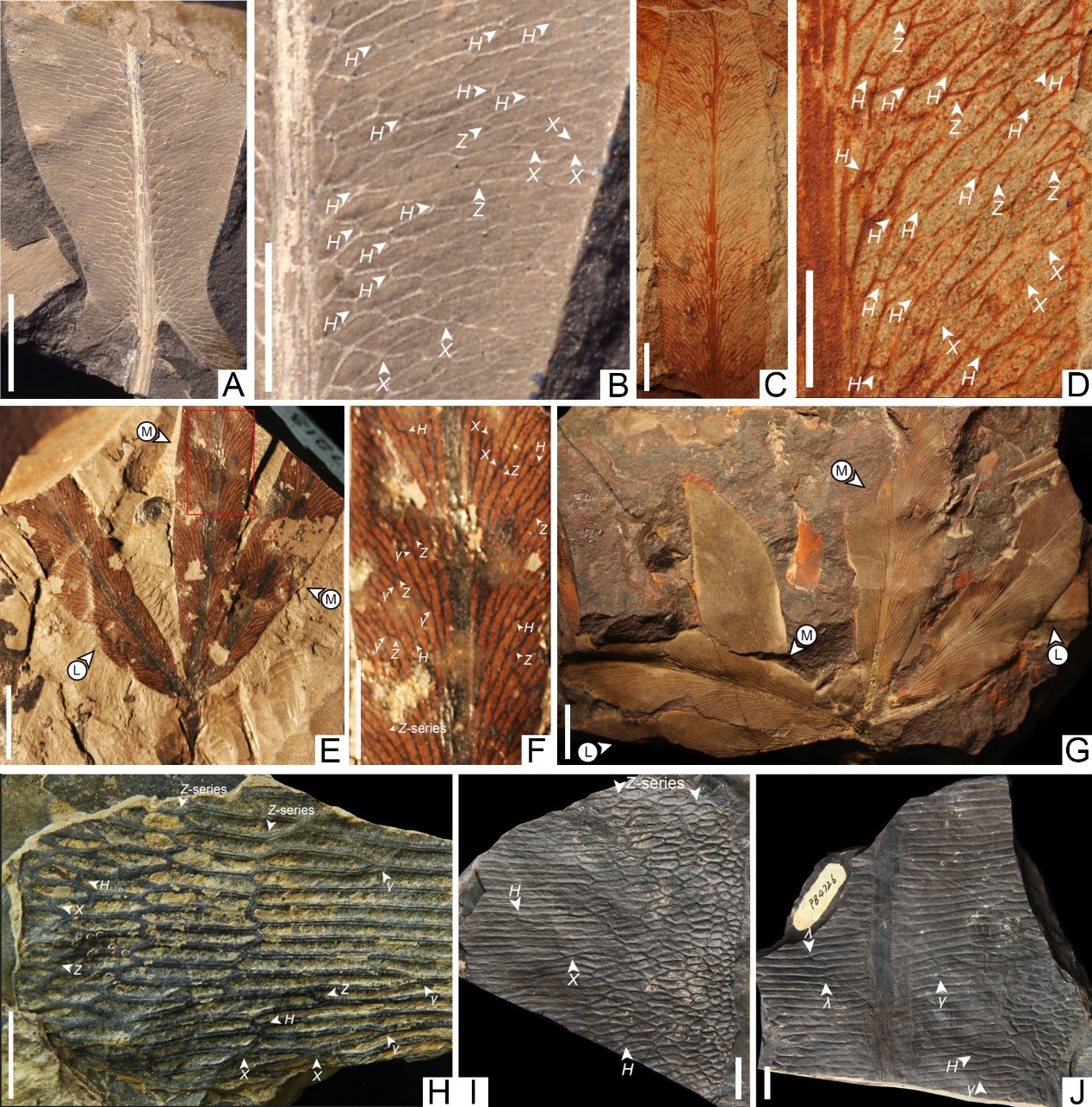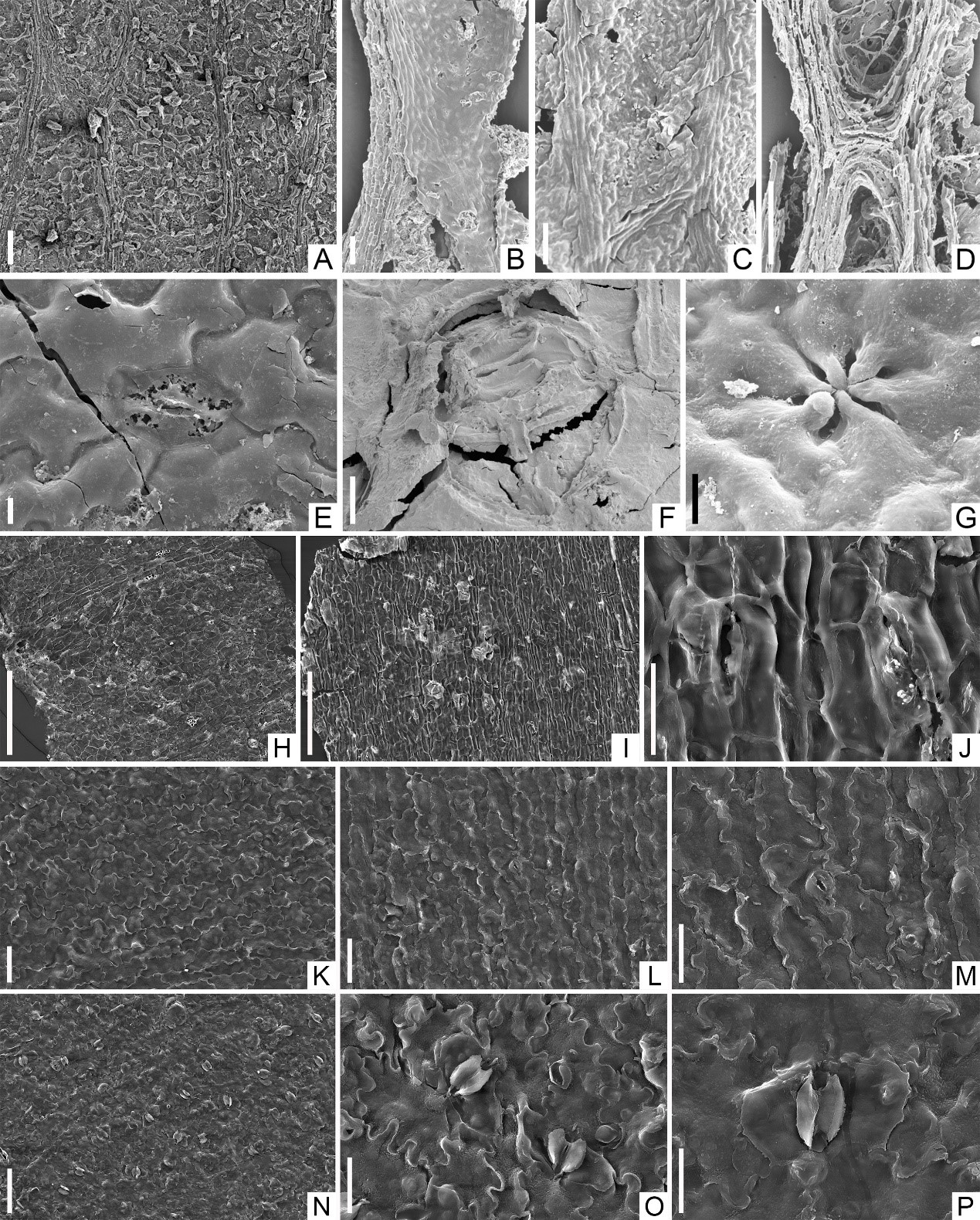A great number of fossil plant taxa are characterized by similar-shaped leaves, leaflets and anastomosing venation that have commonly been assigned to the wrong taxon where only fragmentary or ill-preserved material is available. Venation architectures and cuticular micromorphology of leaf fossils play pivotal roles in higher-level taxonomic segregation, therefore, the standardized descriptions of vein cross-connection types and stomatal features between analogical taxa are indispensable for their morphological comparisons and phylogenetic analysis.
Recently, on leaf vein structure and epidermal characteristics of three morphologically similar fossil plant taxa commonly found in the Paleozoic and Mesozoic eras, which provided new insights into the systematic classification and evolutionary history of these taxa. The study provides new insights into the systematic classification and evolutionary history of these taxa.
Recently, XU Yuanyuan, a PhD student at the Nanjing Institute of Geology and Palaeontology, Chinese Academy of Sciences (NIGPAS), under the joint guidance of Research Professor WANG Yongdong, and Prof. Stephen McLoughlin, Swedish Museum of Natural History, carried out in-depth comparative studieds on the investigations of standardized comparisons between three morphologically similar genera, i.e., Glossopteris, Sagenopteris and Anthrophyopsis, which provided more comprehensive and new perspectives to assess whether venational pattern or stomatal characters can indicate close affinities of fossil plant taxa.
This study was published in the journal of Review of Palaeobotany and Palynology.
Reticulate venations occur in a broad range of plant groups dating back at least to the Pennsylvanian (Fig. 1). In many cases, anastomosing venation styles are markedly similar, and unclear whether these similarities are superficial and convergent or are genuinely homologous. Detailed observations and standardized descriptions of vein cross-connection types of Glossopteirs, Sagenopteris and Anthrophyopsis led to the functional analyses of their reticulate vein systems (Fig. 2).
“Our study reveals, although these taxa have been noted by striking similarities in reticulate venation patterns, their disparate positions on the major seed-plant phylogenies indicates, in most cases, structural similarities of meshed venation in many plant groups are likely to be superficially convergent traits adopted for similar functional benefits.”, XU says.
Cuticular characters, especially the stomatal complexes are arguable among the most consistent micromorphological features in fossil plants. Several traditional comparative studies and phylogenetic analysis incorporating fossil seed plants have generally proposed Glossopterids (Glossopteris), Caytoniales (Sagenopteris) and Bennettitales (Anthrophyopsis) to be close relatives of angiosperms.
However, Glossopteris has perigenous and monocyclic—normally stephanocytic to actinocytic—stomata commonly protected in pits or by overarching papillae; Sagenopteris has surficial anomocytic or stephanocytic stomata with weakly modified subsidiary cells; and Anthrophyopsis has distinctive paracytic stomata consistent with those of Bennettitales (Fig. 2).
This study opens up new avenues for evaluating our understanding of ancient plant taxonomy and provides a foundation for future investigations in this field. In general, the findings in this study challenge some previous notion of putatively close relationship of glossopterids (Glossopteris), Caytoniales (Sagenopteris) and Bennettitales (Anthrophyopsis), and emphasize the importance of considering ecological convergence in the interpretation of ancient plant characteristics.
XU says, “While leaf characteristics have historically been used for classification, the study underscores the need for greater emphasis on the examination of reproductive organs to provide a more accurate understanding of the diversity and evolutionary history of these ancient plants.”
This study was co-sponsored by the National Natural Science Foundation of China, Strategic Priority Research Program (B) of the Chinese Academy of Sciences, State Key Laboratory of Palaeobiology and Stratigraphy, Swedish Research Council and CSC.
Reference: Yuanyuan Xu, Yongdong Wang*, Stephen McLoughlin*, 2023. How similar are the venation and cuticular characters of Glossopteris, Sagenopteris and Anthrophyopsis. Review of Palaeobotany and Palynology, 316, 104934. https://doi.org/10.1016/j.revpalbo.2023.104934.

Fig. 1. Geological range of some representative reticulate plant fossil taxa.

Fig. 2. Representative leaf fragments of Glossopteris (A–D), Sagenopteris (E–G) and Anthrophyopsis (H–J), showing leaf forms and venation styles. Scale bars for A, C, E, G, H–J = 10 mm, for B, D, F = 5mm.

Fig. 3. Micromorphological features of Glossopteris (A–G), Sagenopteris (H–J) and Anthrophyopsis (K–P). Scale bars for A–D, N = 100 μm, for E–G = 10 μm, for H = 100 μm, for I = 300 μm, for J, K–L = 50 μm, for J, M, O = 30 μm, P = 20 μm.
Contact:
LIU Yun, Propagandist
Email:yunliu@nigpas.ac.cn
Nanjing Institute of Geology and Palaeontology, Chinese Academy of Sciences
Nanjing, Jiangsu 210008, China
Download:
